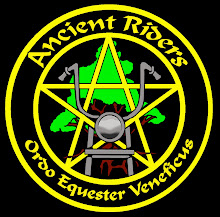So your shiny new cruiser is gleaming in the garage, and the payments aren't too bad, and you have some ultra-loud pipes and a skull-and-crossbones do-rag on order. Life is good. If you ask an assortment of riders why motorcycles are better than cars, you'll get the usual assortment of answers about freedom, being one with nature, astounding performance for the money, fuel economy, and looking cool. It's all true, of course. Cars offer somewhat better protection against heat, cold, rain, and impromptu street riots, but for most of us, that doesn't compensate for the joys of riding.
There is one definite drawback to the motorcycle, however. To one degree or other, motorcycles have their mechanical parts hanging out and accessible, which to many people is an open invitation to adjust, modify, or maintain their own mechanical marvels--even people who have difficulty operating a VCR or assembling the toy in a kid's Happy Meal. Sportbikes do what they can to discourage this by shrouding many components in expensive plastic, but this is just a token gesture, because it's easily removed and broken. Our V-, Road, and Royal Stars are gleaming examples of mechanical accessibility, just inviting the complete idiot to adjust a brake or remove a valve cover or drain the fork oil. As a passable example of just such an idiot, I thought I'd offer a few suggestions to the beginner.
Your Workspace
You hear a lot about "shade-tree mechanics," but in the motorcycling world, most of them have been crushed by Silverados whose kickstands sunk into the dirt below the shade tree. You will need a flat, firm surface, like your bedroom floor or Arnold Schwarzenegger's abdomen. Make sure that you have adequate lighting to distinguish a loose axle nut from parts of your own anatomy. You will need a small pan to catch oil drips (unless you're working on a friend's vintage Harley, in which case you will need a child's swimming pool). Make sure you have lots of shop rags, band-aids, and chilled fermented beverages. A fire extinguisher should be nearby, along with your medical-insurance card and your dealer's phone number. Most beginners strive for a workspace with large, immovable objects elevated just far enough from floor level for bolts and small parts to bounce under when dropped.
Basic Tools
Most modern motorcycles can be damaged beyond repair with just a few simple tools designed for plumbing and carpentry use. You should have at least:
One roofing hammer, which will be used to break loose stubborn parts, to reshape sheet-metal items, for carburetion adjustments, and to force-fit screws and bolts that you forgot that you removed from the other side of the bike One large, inexpensive crescent wrench, used to round off small bolt heads One small, flat-bladed screwdriver, which will sort of fit into the slots of a Phillips-head screw or bolt Two large, flat-bladed screwdrivers, used to puncture tubes while levering tires on/off of rims One can of WD-40, useful for evaporating grease out of bearings and helping road dirt stick to everything One 12-amp automotive battery charger, for that sweet smell of boiling acid One spray bottle of Armor All, used for making both your seat and tire treads exceedingly slick One container of two-year-old lawnmower gas 90% of all home motorcycle repairs can be bungled with this simple collection of tools and supplies. If you don't have these, I'd guess that your dealer will be pleased to provide them for you. As you gain confidence, you might add an SAE socket set for your metric bike, or vice-versa; some duct tape in a contrasting color to anything on your bike; woodworking glue; and a crowbar. You're now ready to do your own repair work.
Preparing to Work
Before starting any work on your motorcycle, make sure that it is clean. Take your bike and a pocketful of quarters to a coin-operated car wash and pressure-clean the wheel bearings and electrical parts with soap, then call a friend with a pickup truck or trailer to get you and your non-starting bike back home. While your bike drip-dries, scatter your tools on the floor around it for easy access. Maintenance jobs go faster if you wait until evening when you are tired and cranky. I recommend wearing only clothing marked "dry clean only," because these will better resist solvents.
Some Expert Help
One optional step, only for the squeamish, is to obtain a shop manual. You will need a new one each time you obliterate the illustrations with black, greasy handprints. Factory shop manuals all cost a hundred dollars, are 500 pages thick, and say things like "Use Yamaha Special Tool GRS85-003021-5439(a) to remove the ignition key from the ignition switch assembly." Aftermarket manuals spell words oddly ("tyres," "blinkers") and have had the same photos of fouled spark plugs for 30 years. Either type will have exploded diagrams of various subassemblies, useful for figuring out just which part just bounced under the old refrigerator, but will direct you to use exotic tools like "pullers" and "feeler gauges," which you don't have and which would look suspiciously like sex toys on your Visa bill.
Some Simple Rules of Thumb
All motorcycles legal for sale in North America use oil in precise quart increments. If three quarts doesn't look like enough, pour in another quart. Recommended tire pressures are approximate, because the pressure rises as the tire heats in use. The lower the tire pressure, the greater the heat and resulting increase in pressure, so just about any reading between "flat" and "exploded" is OK. "Slick" tires have a greater contact patch on the road, as all drag racers know. Replace worn tires only when bits of carcass fabric are sticking out of the tread, unless you can clean those up with nail clippers. Motorcycle batteries are designed to benefit from the various life-giving elements in mineral water, available in various sizes at your grocery store. If you remove muffler baffles (or entire mufflers) to reduce backpressure, be sure to reduce intake restrictions as well by removing the air filter, or at least replacing it with a high-flow model. Unsightly dried bugs on a windshield or instrument faces come right off with Comet cleanser or steel wool and a little "elbow grease." And Comet added to your oil will also help de-glaze cylinder bores. If your machine burns or leaks oil, try a heavier viscosity such as 50W-70 or even better, gear lube, with a quart of STP. Control cables tend to fill with crud over time, which can be removed by pressure-washing at the car wash. Air-cooled engines should only be washed with cold water from a garden hose, once the engine has warmed to operating temperature and is idling. Greasy build-up can be removed from aluminum parts with inexpensive muriatic acid, available at pool-supply stores. Be sure to mask adjoining parts carefully before spray-painting your tank or fenders. Use a quick-drying enamel such as "Krylon." Latex house paint will tend to discolor over time. As you gain familiarity with your machine, and learn the names of all the parts guys at your dealership, you will have the self-satisfaction of knowing that your machine reflects your personality and mechanical aptitude. Now before you get all proud and big-headed, make sure that you have your car hood welded shut.
This is all in fun, of course. Everything suggested above will ruin your bike. As they say in the ads, "don't try this at home."
Wednesday, October 05, 2005
Subscribe to:
Post Comments (Atom)









No comments:
Post a Comment